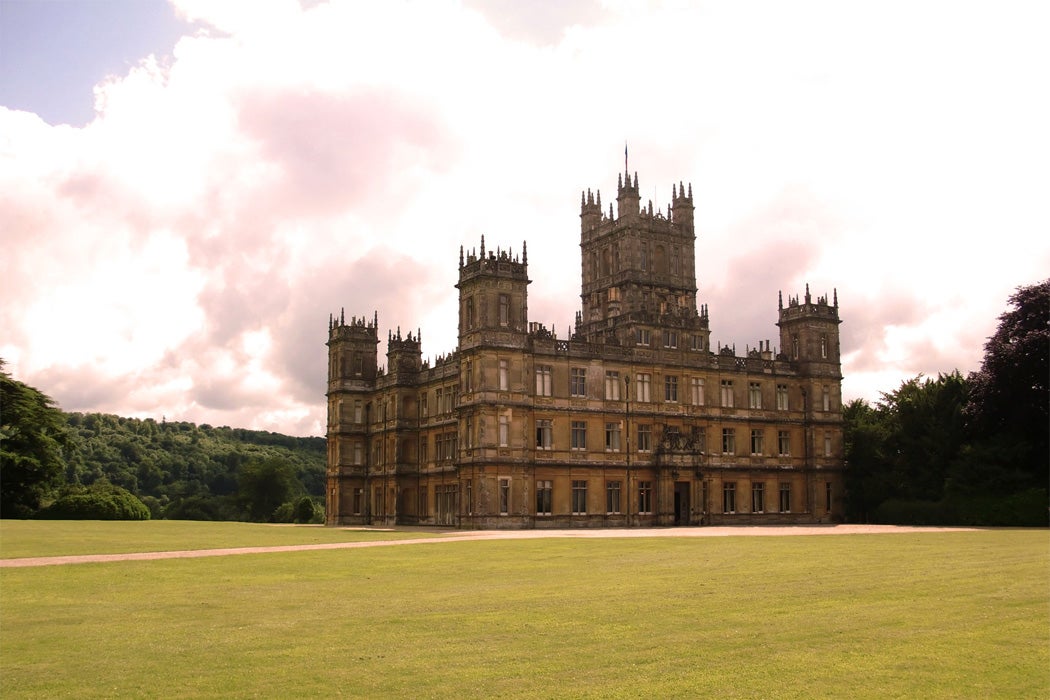The soothing Downton Abbey theme song is back, which can only mean that, after four years off the air, Julian Fellowes’s Crawley family has returned for the show’s first motion picture event. The Downton Abbey movie features a familiar cast of characters: the indomitable Dowager Countess Lady Violet, played by the silver-tongued Dame Maggie Smith; the fussy Mr. Carson, portrayed with warmth and steadfastness by Jim Carter; the striking Lady Mary (Michelle Dockery, with ice in her veins). And, of course, the set piece that defined it all, Downton Abbey, a.k.a. the real-life Highclere Castle, a Jacobethan estate in Hampshire, England.
When Downton Abbey first premiered in 2010, the upstairs-downstairs drama fast became a cultural phenomenon. Those who yearned for a piece of the Crawley family lifestyle set into motion a so-called “Downton effect.” Sales surged for items such as bespoke Savile Rowe suits, afternoon tea, tiaras, and luxury wallpaper. But as Oliver Cox, Heritage Engagement Fellow at the University of Oxford, writes in “The ‘Downton Boom’: Country Houses, Popular Culture, and Curatorial Culture,” one of the most interesting cultural impacts of the show was that it also spurred a renewed interest in English country estates.
Weekly Newsletter
While the English country house has enjoyed its share of popular interest over the years, “the extent to which this surge in interest has been laid at the door of one particular (fictional) country house, Downton Abbey,” as Cox points out, was particularly remarkable:
Downton Abbey has reinforced the importance of bringing alive the country house, challenging academics and curators to explore how competing personal narratives can be used to explain the architectural container that shaped and determined the evolution of these stories.
And while the show has received its share of criticism by historians for the genteel way it portrays the two separate worlds depicted in the Downton Abbey silhouette, it also offers estates the opportunity to go more in depth on what life was really like for everyone living in their historic homes. Cox writes:
The challenge, for academics and the heritage industry alike, is how to use the quasi-historical shorthand of Downton as a way of enticing visitors into the longhand stories of the country house that can only emerge through detailed archival research and effective interpretation strategies.
As Cox points out, Fellowes has echoed these thoughts in his own interviews: “[W]e used to have houses presented to us as the homes of the upper class, or the former upper class, and there was no real thought about how they ran or the rest of the working community there,” the creator said in 2012. “That is out of date now and, today, a much wider audience feels rightly that these houses are part of their own history and the history of their family.”







